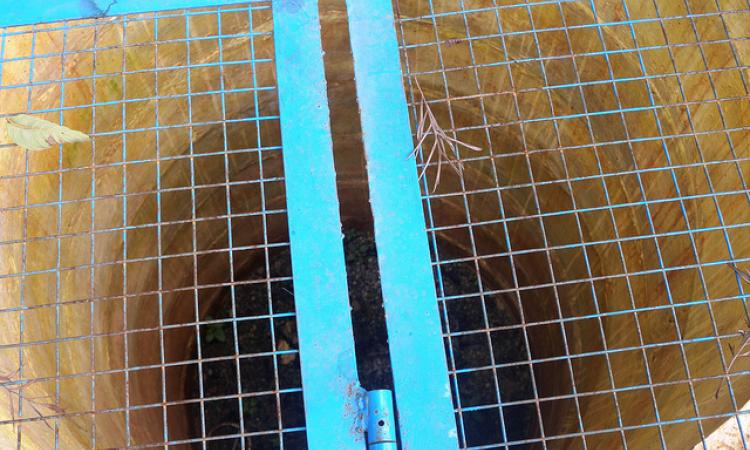
Open wells have a major role to play in the artificial recharge of groundwater. Rooftop rainwater and surface water flowing in storm water drains can be filtered; the silt removed and allowed to recharge the open wells.
If you are building on a new site do not forget to consider digging an open well. No, It need not be like the magnificent stone structure shown alongside. It can be of RCC rings, only a metre in diameter and about 6 metres deep.
Materials required
- Ferro cement rings which are available in the following sizes – 2’, 2 ½’, 3’, 4’ and 6’ diameter
- Boulders for lining the pit
Site specification
- Should have sufficient catchments
- The substrate should not be hard rock
Note
- Concrete ring-wells of diameter ranging from 2 to 6 feet and depth of 20 to 30 feet store large volumes of rainwater and recharge the groundwater under good hydrostatic pressure
- The soil profile determines the water holding capacity and the depth of wells
Construction technique
Step 1
- Identify the catchment area
- Ensure that it is clean and unpolluted
- Determine total runoff and maximum runoff from rainfall data
Step 2
- Identify natural drainage flow channels (storm drains) or create artificial drainage channels
- Locate the position of recharge well in the channel or off the channel
Step 3
- Dig a pit having dimension 2” more in diameter, than the rings
- Dig the pit till the aquifer is reached
- Pack the pit with 1” thick layer of boulders
- Place the rings one above the other in the pit
Step 4
- Cover the pit with percolated cover
- Make arrangements to remove silt and leaves before water enters recharge well
- Monitor the rate of recharge and decide on the number of recharge wells necessary for the catchments
Cost and caution - Recommendations
- By making some experiments to observe the rate of infiltration of water, you will be able to decide the number of recharge wells necessary for the catchments
- Water should also be allowed to flow into the well gently from the sides or as a spray. This prevents the churn up of silt which otherwise causes air bubbles to block the natual pores in the soil.
What else is possible
- With a good aquifer, the ground water table should rise and the recharge well can become a withdrawal well
- Recharge wells are excellent for recharging bore wells
- Rooftop rainwater is ideal for such recharge as it is easy to keep roofs clean
Cost
Digging a new recharge well costs around Rs. 8,000 to Rs. 12,000 depending on the diameter and depth.
Caution
- The catchments should be clean and unpolluted
- Do not let contaminated water get into the well
- Regularly monitor the water table for both water levels and water quality
- Regular maintenance of the channel is very important
Trivia: A 3 feet diameter and 20 feet deep well can recharge ground water from nearly 1000 square metres of area which in a normal year of rainfall (900 mm) means about 1 million litres of water.
/articles/augmenting-groundwater-basics-how-construct-recharge-well